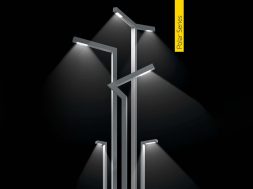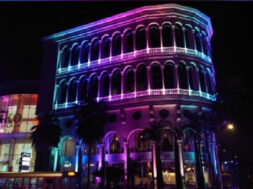IoT: towards smarter construction

New technologies can help identify glitches that hamper construction efficiency.
New smart building solutions have arrived in the form of economical, easy-to-install Internet of Things (IoT) sensors, switches, and gateways. The technology existing today allows buildings to essentially learn from itself. A modern building automation system will monitor the various facilities it controls to understand how to optimise maximum efficiency. Rajan Aiyer, Managing Director, Trimble, Saarc region says, “With Trimble’s flagship product Tekla Structures’ being Building Information Modelling (BIM) enabled, industry professionals can embed key product and asset data into a 3D computer model, which can then be used for effective management of information throughout a project lifecycle – from early concept through to construction and finally managing building operations.”
The growth of smart buildings also calls for robust automation of building assets through an IoT-enabled system of connected sensors. This shall allow construction workers, machinery and materials to ‘talk’ to a central data platform BIM, which will capture critical performance parameters.
IoTcan also play an important role in the maintenance of critical building equipment like HVAC, elevators and escalators. Sensor data can monitor patterns in key stress indicators, such as temperature or vibration patterns. If abnormal patterns are detected, building maintenance can be triggered automatically to intervene before an actual failure happens, Rajan said.
The infrastructure and construction industry has incorporated ‘smart’ in their encyclopedia allowing customers to visualise all the information regarding the building at one place. For the building, they want everything to be automated. The solution to this is to have a virtual replica of a smart building. Virtual replica of smart buildings will enable us to enhance integrities in the activities that we carry out. Today, smart building is no longer a building with just better connectivity or water management system- it has extended its purview on the implementation aspect as well, both at the urban and rural level.
Deepak NG, Director, Global Affairs, Dassault Systemes India states, “Creation of a virtual building to simulate key new features is what automation is going to offer to these assets. The first step towards achieving that is to design a structure that would meet the sustainability requirements of these buildings. Automation is a wide concept, and to establish this in the structures is not an easy task. So with virtual models of these buildings, small aspects which play bigger roles in the smart structures will undergo examination- such as water pressure, temperature of the building, underground pipeline system etc. Today, in the present scenario, advanced building technologies have started to expand opportunities for project contributors, so that building data is fully ‘transactional’ across them instead of being locked in proprietary systems.”
The 3DEXPERIENCE Platform by Dassault Systemes offers world-class PLM applications designed to enable highly efficient, collaborative design and construction processes. As a world leader in collaborative 3D technology, Dassault Systèmes advocates a universal understanding Modular and Lean construction, Integrated Project Management and Execution, Accurate Bill of Quantity and PLM principles to help reduce waste and costs, improve sustainability, and realise more value from construction processes to help incorporate automation in all of them.
Latest innovation for smart buildings
What makes building construction inefficient is a clash between the mechanical, electrical and plumbing runs. With new technologies, one can identify such problem areas ahead of construction and create designs that are smarter and sustainable.
According to Rajan, “Trimble Microsoft HoloLens is a great example of how technology is aiding buildings’ construction to be smarter and more efficient. It adds holograms of 3D objects into a user’s view, allowing interaction with these virtual objects as if they were physically present. Trimble’s innovative mixed-reality solutions allow the firms to feed 3D engineering models into the HoloLens world, including models of large or complex projects in the real-world. The mixed-reality technology supplements conventional working practices and improves communication, collaboration and visualisation and accelerates the engineering design process.”
In a nutshell, smarter designs, smarter construction, smarter coordination, smarter planning are all part of the definition of a smarter building.
Deepak says, “When it comes to innovation in smart buildings and cities, I would like to cite two examples of 3DEXPERIEN City. 3DEXPERIEN City provides a horizontal approach powered by the 3DEXPERIENCE platform that links all players in a collaborative working environment and enables access to a single data referential, which dynamically updates as new data becomes available. Consequently, data is exchanged and turned into information, in the literal sense of the word—it takes form. 3DEXPERIEN City’s horizontal architecture is an integrative environment directly linked to the dynamic data referential that powers the modeling, analytics, simulation and visualisation of the city in its past, present and future states. A marketplace presents the vast offer of content, applications and services to cities, businesses and citizens.”
3DEXPERIEN City federates those disparate elements through its integrated platform. It links the stakeholders from all city domains in a collaborative working environment and enables access to a single data referential, which constantly updates as new data becomes accessible, and is linked to the 3DEXPERIEN City marketplace offering, which includes content as well as applications, services and business opportunities, Deepak said.
‘Virtual Singapore’ integrates city data from sensors and systems in 3DEXPERIEN City’s collaborative environment to virtually represent and manage Singapore’s data and processes. ‘Virtual Singapore’ is championed by National Research Foundation (NRF), the Singapore Land Authority (SLA) and Government Technology Agency of Singapore (GovTech), in collaboration with Dassault Systèmes.
The city of Rennes used 3DEXPERIEN City to create its digital referential, the first of its kind in France. The 3DEXPERIENCE platform’s design and simulation applications were used to model the city’s buildings, architectural superstructures and infrastructure. The virtual model offers a meeting place for all the city’s stakeholders – elected officials, residents, developers, planners, architects, entrepreneurs, energy suppliers, water utilities, waste treatment managers, transportation systems, and communications networks – to collaborate and innovate together as they plan and build the sustainable city of the future.
The growth of smart buildings also calls for robust automation of building assets through an IoT-enabled system of connected sensors.
Rajan Aiyer, Managing Director, Trimble, Saarc region
Creation of a virtual building to simulate key new features is what automation is going to offer to these assets.
Deepak NG, Director, Global Affairs, Dassault Systemes India
Cookie Consent
We use cookies to personalize your experience. By continuing to visit this website you agree to our Terms & Conditions, Privacy Policy and Cookie Policy.









